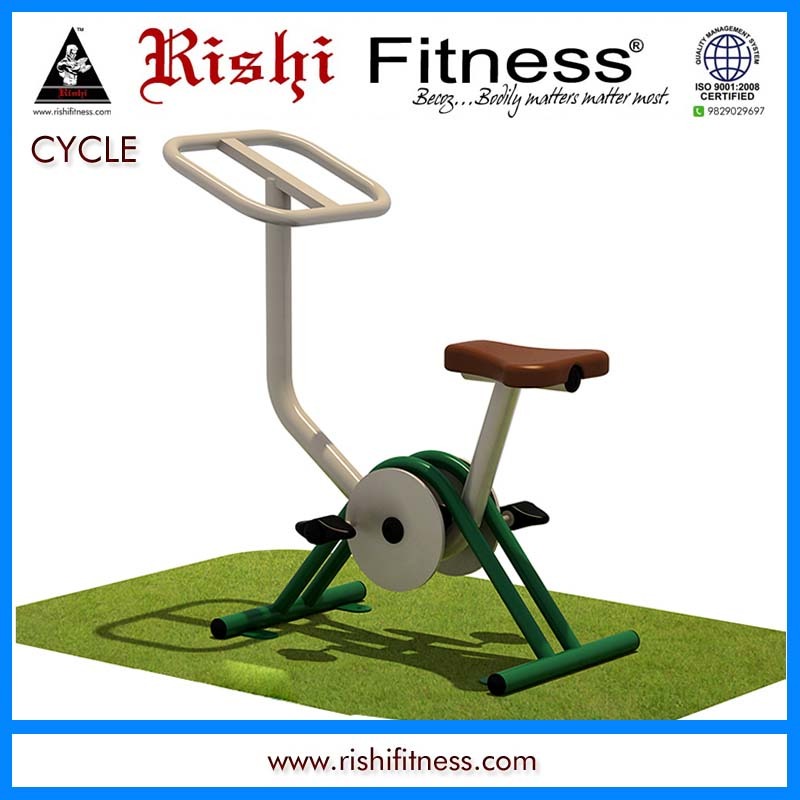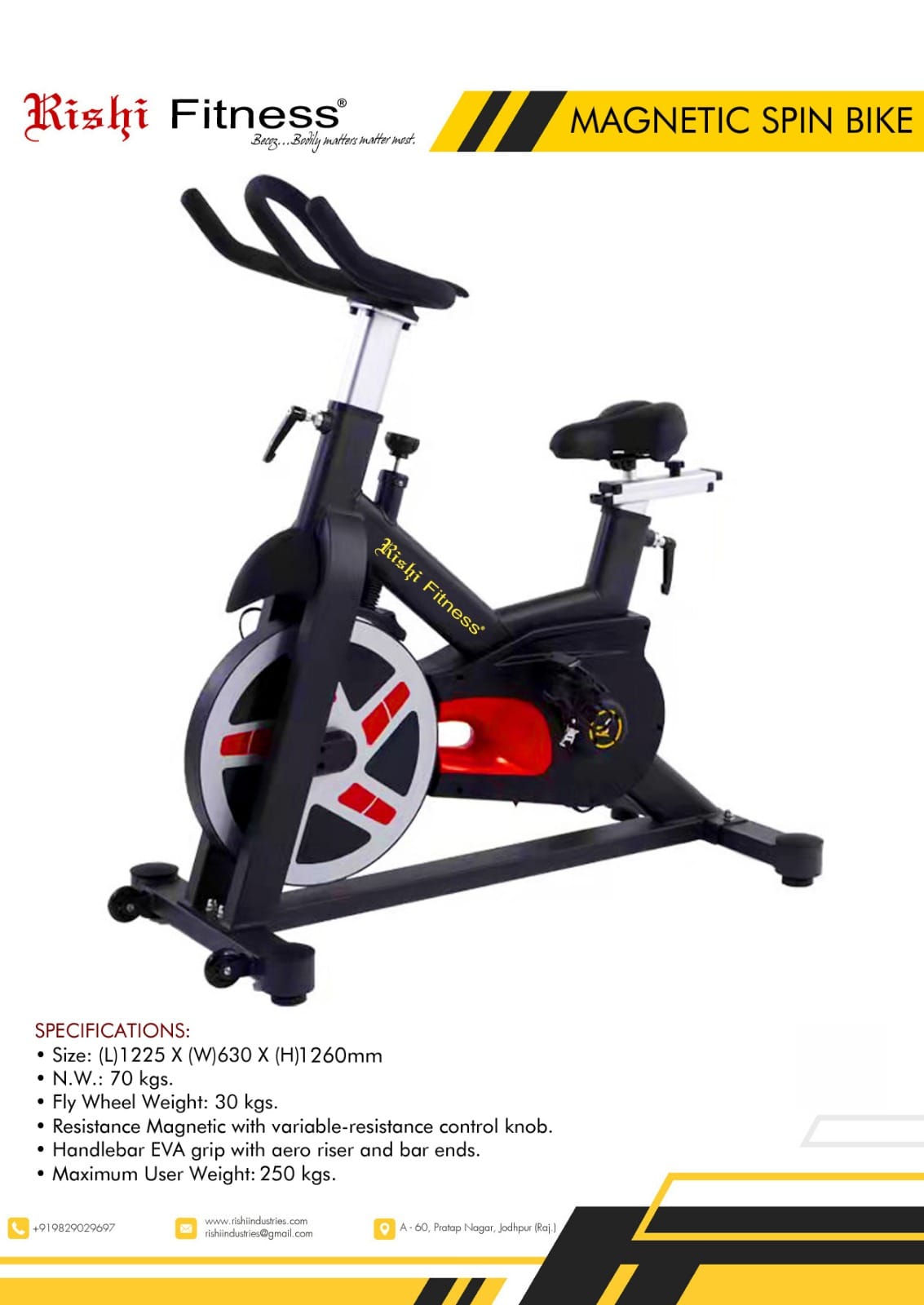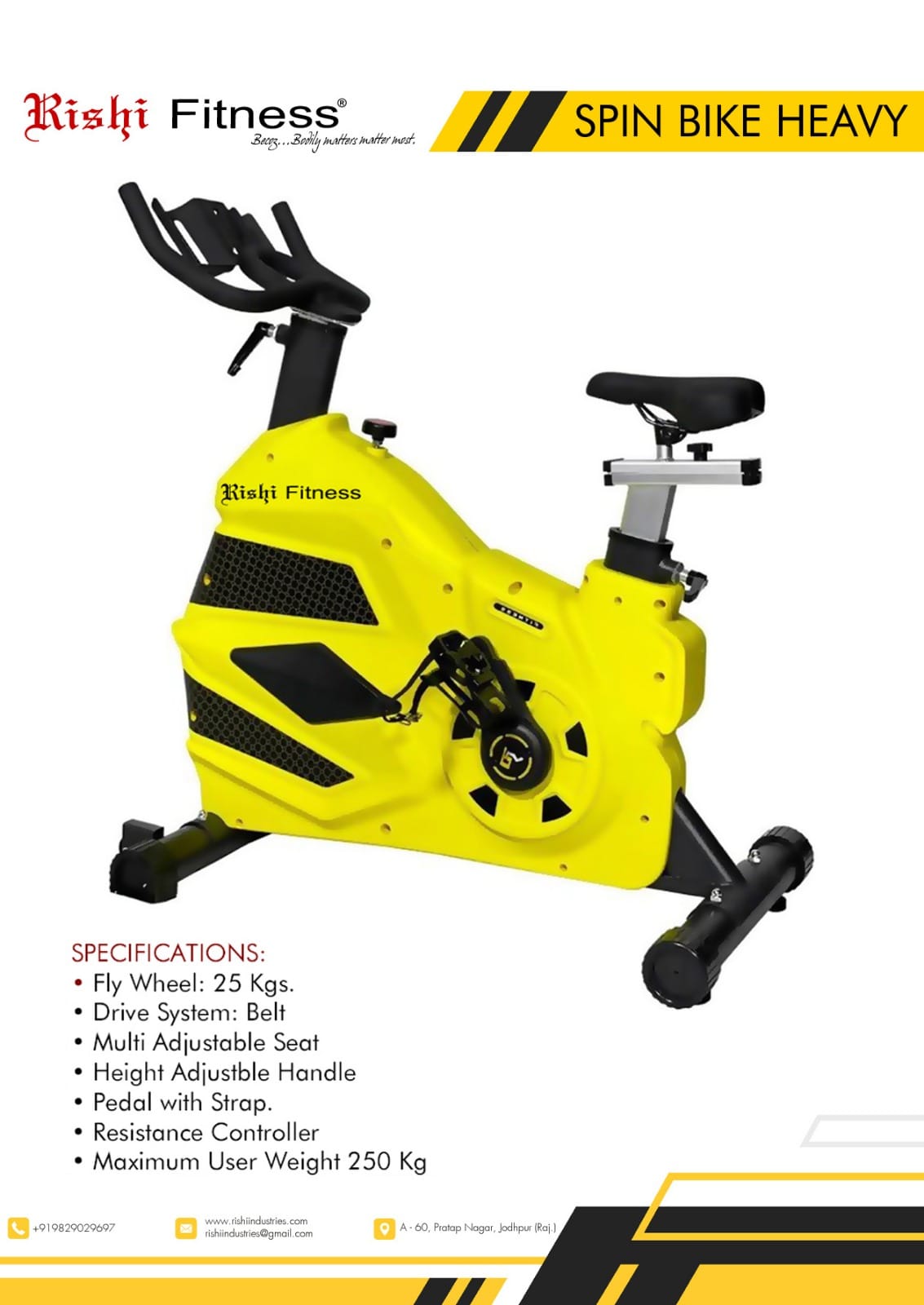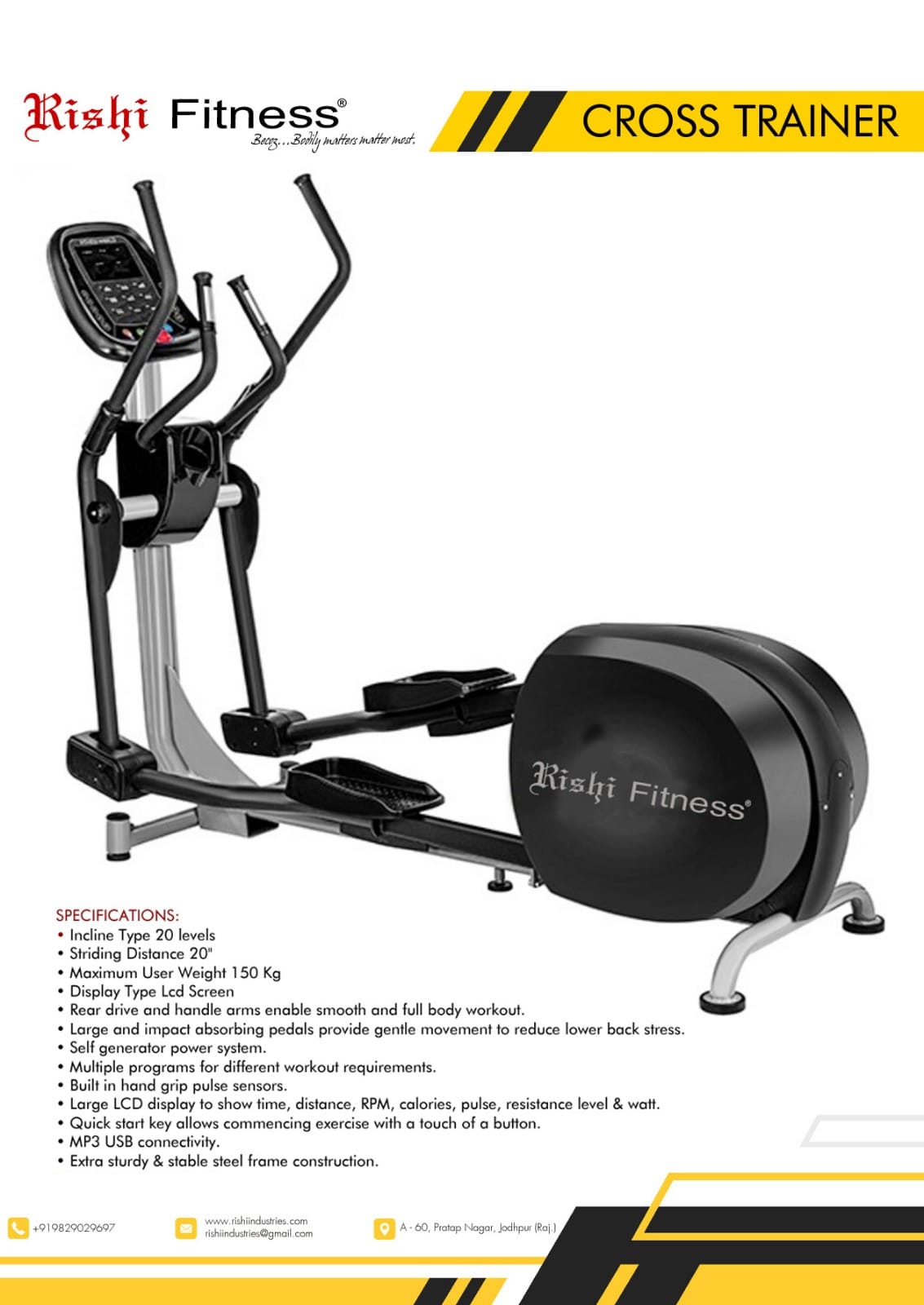Description
Product details
An exercise cycle, often referred to as a stationary bike or exercise bike, is a popular piece of cardiovascular fitness equipment that simulates cycling indoors. It provides an effective low-impact workout for improving cardiovascular health, building leg strength, and burning calories. There are several types of exercise cycles, and they can be used for a variety of fitness goals, from weight loss to endurance building. Types of Exercise Cycles: Upright Exercise Bike: This is the traditional form of a stationary bike, where the user pedals while seated upright. Design: Similar to a road bike, with handlebars positioned above the seat. Muscles Targeted: Primarily works the quadriceps, hamstrings, calves, and glutes, but also engages the core for stabilization. Benefits: Great for improving cardiovascular fitness, burning fat, and strengthening lower body muscles. It can be used for high-intensity interval training (HIIT) or steady-state cardio. Recumbent Exercise Bike: A recumbent bike has a reclined seat with a backrest, providing extra comfort for users, especially those with back issues or joint pain. Design: The pedals are positioned in front of the user, and they sit in a more laid-back, horizontal position. Muscles Targeted: Similar to the upright bike but with more emphasis on the hamstrings and glutes. The reclined position also provides less strain on the back and joints. Benefits: The recumbent bike is ideal for individuals seeking a more comfortable ride or those recovering from injuries. It’s easier on the joints and lower back. Spin Bike: A spin bike is designed for high-intensity indoor cycling workouts, often used in group cycling classes (spinning). Design: Features a heavy flywheel for a smoother, more intense ride, and adjustable resistance for customizing the workout's difficulty. Muscles Targeted: Works the quadriceps, hamstrings, glutes, and calves, with a higher emphasis on endurance and strength due to the resistance settings. Benefits: Excellent for building endurance, leg strength, and cardiovascular fitness. It’s also great for fat loss and high-intensity interval training. Air Bike (Fan Bike): An air bike has a fan that creates resistance based on how hard you pedal and how fast you go. The faster you pedal, the more resistance you generate. Design: Includes handlebars that move along with the pedaling to engage the upper body as well. Muscles Targeted: It works both the upper and lower body since the handlebars engage the arms, shoulders, and core, in addition to the legs. Benefits: Air bikes provide a total-body workout and can be used for intense interval training or endurance rides. The resistance increases with speed, making it great for building strength and cardiovascular endurance. Dual Action Exercise Bike: This bike combines the features of an upright bike and a rower. It allows users to use both their upper and lower body at the same time. Design: Similar to an upright bike but with handles that move forward and backward, engaging the arms and shoulders as well as the legs. Muscles Targeted: Legs, arms, shoulders, back, and core. It offers a full-body workout. Benefits: Great for full-body workouts, improving cardiovascular health, and building upper and lower body strength simultaneously. Benefits of Using an Exercise Cycle: Cardiovascular Health: Regular cycling on an exercise bike improves heart health by strengthening the heart muscle, reducing the risk of cardiovascular diseases, and improving overall circulation. Low-Impact Exercise: Cycling is gentle on the joints, making it an excellent option for individuals with joint pain, arthritis, or those recovering from injury. It’s a low-impact alternative to running or other high-impact exercises. Muscle Toning and Strength: Regular cycling helps tone the lower body muscles, particularly the quads, hamstrings, calves, and glutes. If you increase the resistance, you can also build muscle strength. Weight Loss and Fat Burning: Using an exercise bike is an effective way to burn calories, especially when used for high-intensity interval training (HIIT). Consistent cycling can help with weight loss and fat burning. Improved Endurance: Cycling, particularly on a spin bike or air bike, helps build endurance, especially for cardiovascular fitness. This can translate to improved performance in other physical activities. Core Engagement: Although primarily a lower body workout, cycling also engages the core muscles, especially when you maintain proper posture and balance. Convenience: Exercise cycles provide a convenient workout option for those who prefer to work out at home, particularly during bad weather or for those who don't have access to outdoor cycling routes. How to Use an Exercise Cycle Effectively: Warm-Up: Start with a 5–10 minute warm-up at a low resistance level to prepare your muscles and increase your heart rate.






